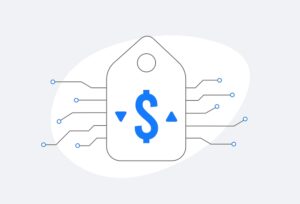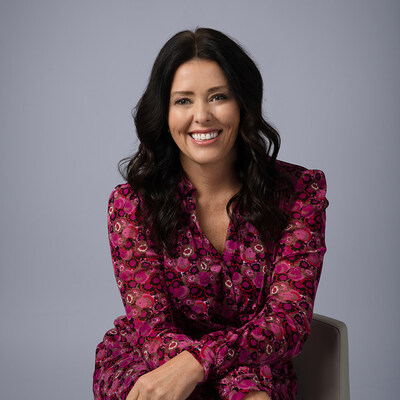 Is your market research approach evolving with the times?
Is your market research approach evolving with the times?
Consider how humans display remnants of our ancient DNA that are no longer relevant, such as tailbones and appendices, goosebumps, wisdom teeth, and inner eyelids. These features fall into a category called human vestigiality; they are vestiges of our past. Market research, which is nearing its 100th anniversary of Daniel Starch’s first man on the street interviews, is showing signs of research vestigiality.
Market research needs to undergo a third phase of revolution in survey strategy and design. By revolution, we don’t mean just the expansive evolution of adopting new tools and technologies like biometrics, advances in neurology and geolocalized sample targeting. These certainly expand, enhance, and improve market research, but they are not responsible for this new revolution in the actual questions we ask.
Phase One: Nuts & Bolts
To talk about what is happening today, we have to put it in the context of the past. Starch and the next generation of researchers were explicitly tracking the ACCA models of shopper awareness, understanding and purchase of the brand. Research, in this context, was used to evaluate whether or not a brand was successfully traversing this journey and driving consumers to purchase. Consider this the “first phase” of research, which focused very much on ROI and messaging around features.
Phase Two: Emotion & Connection
In the 1960s, advertising started becoming more symbolic, emotional and story-focused. As products met a certain cost of entry or “good enough” level of quality, it became harder for brands to differentiate. This led to advertisers seeking new ways to gain shopper attention. Ads began to move away from touting product features that were better than the competition and instead focused on building a relationship with the consumer on an emotional level. It took a few decades before market research started to truly embrace measurement of this more emotional advertising by tracking emotional paths to brand consideration like engagement, popularity, and connection. This is the “second phase” of research, which put more emphasis on consumer emotion and connection.
On the heels of a laser focus among advertising agencies to develop their account planning departments, market research companies began presenting themselves more like account planners or brand strategists grounded in data.
Although this made the research more comprehensive in terms of the number and complexity of the questions asked, market research held onto the fundamental idea that shoppers move along a path from brand awareness to brand loyalty. Yes, that path had become more complicated and there were multiple ways to bring a consumer from unknown to known to purchase to loyal. But, the path itself and the idea that shoppers could be led down the path by a brand’s marketing campaign remained fundamental.
Less than two decades passed between this evolution in thinking and the digital
age. For the first decade of the 2000s, most market researchers believed that the model still worked. A consumer went from not knowing about a brand, to gaining knowledge about that brand, to purchasing, and then to loyalty. Yes, the methods might be different in terms of the communication channel—a banner ad might be seen before a television ad—but, the overall premise was the same. Researchers were simply tacking
digital on to their models.
Phase Three: Individualized Path to Purchase
Digital impacting shopping behaviors means there is a need for a third phase of market research that rethinks these models from the ground up.
Although technology is dramatically and rapidly changing consumer behavior, most market research firms continue to hold to the traditional models, with more focus on engagement. But, the shopper has entirely moved beyond this model. Researchers are looking at how technology is changing the way we advertise and generate brand awareness. This is important, but it doesn’t touch the bigger undercurrent of consumer change.
Technology is enabling consumers to shop in a completely different environment where advertising isn’t just coming at them from various new channels, but is dramatically muted by all the other inputs shoppers are receiving.
Think about a recent purchase you’ve made. Chances are it involved some online research—maybe you review or two, or perhaps a product was served up by an website that understands your search history or connected your search with purchases made by other shoppers.
Why are we still assuming that shoppers follow the traditional awareness, consideration, purchase, loyalty model? Today, regardless of the product category, there is no clear consistent path to purchase.
Imagine a shopper is standing in a room with 50 doors and they can choose one to go through. In the next room are another 50 doors and so on and so on. All eventually lead to a purchase, but each new shopper will undoubtedly take a varied path from the next.
Reasons for Change
Shoppers control where they go and what they read, see or hear about a brand. There is rarely passive absorption of marketing messaging. When shoppers do come across an ad, it is often met with skepticism and the claims and content need to be verified for them elsewhere.
Between apps, aggregator websites, brand websites, and independent review websites, shoppers have a wide variety of options when looking for more information or for that ad verification. And, unfortunately for marketers, many of those channels are not controlled by the brand.
Strangers can nowalso influence each other on their purchases. Most consumers, when researching any product or service before purchase, will reach out to someone they don’t know for advice via reviews, YouTube videos or blogs from experts and trend watchers. Shoppers can even proactively ask for reviews by posting a request to friends on social media. GiantsFan1998 can change the mind of TwinMomLiz by giving a poor review of a new baby swing—even if they’d never be friends in “real” life.
Today’s Landscape
Now let’s take a look at our survey tools. We start with awareness —aided and unaided. Then we move into brand consideration. Do you know us? Are you loyal? We follow that up with some personality and imagery metrics to better understand what might be driving loyalty and brand perceptions. Recognize the problem? Most of this is vestigial research and incompatible with how many shoppers today think about their journey and their purchase decisions.
Awareness is still necessary. You can’t purchase a brand or have an opinion about it without knowing they exist, but this metric must be expanded. Some researchers will ask about familiarity or prior experience with the brand to help round out the picture of awareness and this is absolutely correct.
Yet, we need to continue to push our understanding of awareness further. Did their awareness originate from a positive or negative association? Often this first introduction can influence brand perceptions as much if not more than other exposure at a later date.
Beyond association, how long has a shopper known about a brand? At some point, we’ve all purchased a brand that we had never heard of a few moments ago. With all the rapid changes in technologies, brands, and categories, the opportunity to interact with never-before-known brands is on the rise. Does a legacy of awareness work in a brand’s favor or against?
It is becoming increasingly rare for a shopper to say, “This is the only brand I will buy.” The shopper is aware that new products are coming on the market all the time and categories are evolving. This is an impossible standard to ask a shopper to agree with and is really only valid in categories that have exceedingly high loyalty, such as soda. Shoppers now think about a brand as the “best option at the moment” or the “brand I’ll buy until something better comes along” or an entry level product as a trial in a new category. Many people will have a rotating set of preferred brands that they move easily between.
Ultimately, our questionnaires still reflect very traditional ways of thinking about the shopper experience. The digital revolution is not only changing the way consumers interact with brands, it is fundamentally changing the way they shop. In order to give our clients a competitive edge, we must look deeper than the industry standard and reframe our surveys.
Rebecca Brooks is co-founder of Alter Agents.
Related Articles:
Brand Research: 5 Pitfalls to Avoid



 Network
Network

